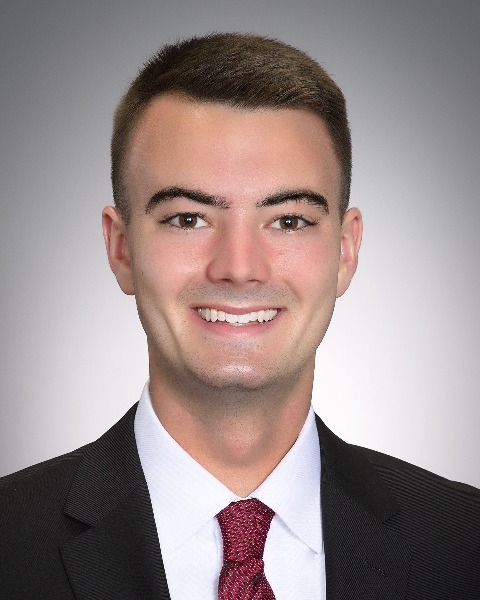Back
Poster Session B - Monday Morning
B0681 - Females May Be at Higher Risk of Severe and Dysplastic Fundic Gland Polyposis: An 844-Patient Analysis
Monday, October 24, 2022
10:00 AM – 12:00 PM ET
Location: Crown Ballroom

Charlie Altfillisch, MD
University of Kansas Medical Center
Kansas City, MO
Presenting Author(s)
Introduction: The risk of gastric cancer is increasing in the western world for unknown reasons. Fundic gland polyps (FGP) are common. In many cases, the burden of gastric polyps is high making management challenging and causing anxiety among patients. We compared patients with and without FGP to determine potential risk factors associated with severe FGP.
Methods: In this retrospective, single-center study, all patients with a diagnosis of histologically confirmed fundic gland polyps between January 1, 2021, and December 31, 2021 were included. Controls were defined as patients without FGP during an upper endoscopy, selected randomly in a ratio of 1:1 to cases. Cases and controls were identified by using a specialized text-based search of the pathology and endoscopy reporting software. Upper endoscopies done for suspected or established reflux and/or dyspepsia were included. A structured RedCap electronic database was created to systematically abstract data about demographics, endoscopies, and histology. Severe FGP was defined by the presence of endoscopic descriptors such as “innumerable”, “diffuse”, ”numerous”, “many”, “ >50 polyps” etc., and confirmed by endoscopic pictures. Patients with a known inherited gastrointestinal syndrome were excluded. Multivariate logistic regression was performed.
Results: The prevalence of FGP has increased over the past decade (Figure 1). Eight hundred and forty-four patients (422 with FGP and 422 without FGP) were included (68% female, mean age 56, SD 15.4 years). Increasing age (1.02 (1.01, 1.04)) and >2 years of PPI use [3.01 (1.84, 4.98)] were associated with increased risk of FGP; all P< .05 (Table 1). Of the 422 patients with FGP; 95.5% had mild polyposis and 4.5% had severe polyposis. Most of the patients with moderate to severe polyposis were post-menopausal females (87.5%). Low-grade dysplasia (LGD) within FGP was found in 25 (5.5%) patients (77% were female) and high-grade dysplasia (HGD) within FGP was found in 5 (1.1%) patients (80% were female).
Discussion: Longer than 2 years of PPI use is associated with FGP. Post-menopausal females were at the highest risk for severe polyposis. Further research into long-term outcomes is needed to determine which patients could benefit from surveillance.
Methods: In this retrospective, single-center study, all patients with a diagnosis of histologically confirmed fundic gland polyps between January 1, 2021, and December 31, 2021 were included. Controls were defined as patients without FGP during an upper endoscopy, selected randomly in a ratio of 1:1 to cases. Cases and controls were identified by using a specialized text-based search of the pathology and endoscopy reporting software. Upper endoscopies done for suspected or established reflux and/or dyspepsia were included. A structured RedCap electronic database was created to systematically abstract data about demographics, endoscopies, and histology. Severe FGP was defined by the presence of endoscopic descriptors such as “innumerable”, “diffuse”, ”numerous”, “many”, “ >50 polyps” etc., and confirmed by endoscopic pictures. Patients with a known inherited gastrointestinal syndrome were excluded. Multivariate logistic regression was performed.
Results: The prevalence of FGP has increased over the past decade (Figure 1). Eight hundred and forty-four patients (422 with FGP and 422 without FGP) were included (68% female, mean age 56, SD 15.4 years). Increasing age (1.02 (1.01, 1.04)) and >2 years of PPI use [3.01 (1.84, 4.98)] were associated with increased risk of FGP; all P< .05 (Table 1). Of the 422 patients with FGP; 95.5% had mild polyposis and 4.5% had severe polyposis. Most of the patients with moderate to severe polyposis were post-menopausal females (87.5%). Low-grade dysplasia (LGD) within FGP was found in 25 (5.5%) patients (77% were female) and high-grade dysplasia (HGD) within FGP was found in 5 (1.1%) patients (80% were female).
Discussion: Longer than 2 years of PPI use is associated with FGP. Post-menopausal females were at the highest risk for severe polyposis. Further research into long-term outcomes is needed to determine which patients could benefit from surveillance.

